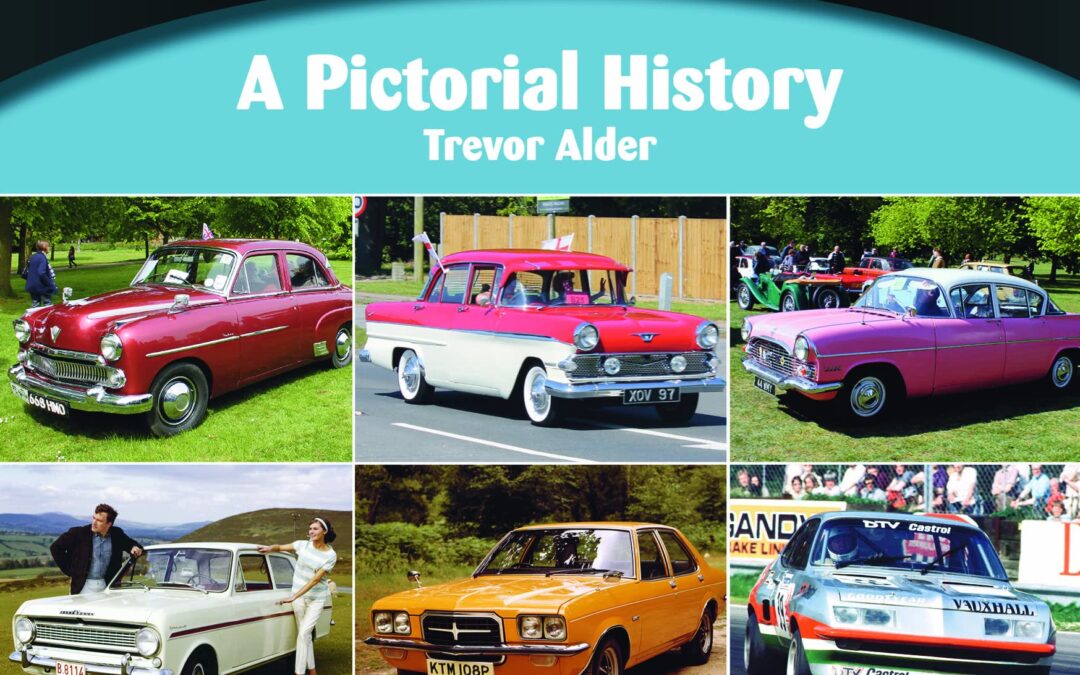
A comprehensive pictorial history of all Vauxhall cars produced from 1945 up to and including models in production in 1995. This really is the ‘go-to’ publication if you need to compare your Vivas, Victors, Ventoras or Viceroys!
Breaking down the many models into several chapters, this is a trip down memory lane for any postwar car enthusiast. Comprehensively illustrated, the book includes line drawings, black & white plus colour period photographs, together with interior detail. All models are covered along with sports derivatives, limited editions, vans, estates, coupes. It includes a section on motor sport achievements and TV/movie appearances. Contemporary factory advertising slogans used is key throughout. Complimenting the historical content, technical specifications, key production changes and build figures are also detailed.
Trevor Alder has been driving Vauxhalls and Opels for many years and has previously written and compiled several Vauxhall/Opel publications from his massive self-indexed magazine archive. The research for this book suggests this a bookshelf-must for anyone interested in a slice of Britain’s motoring heritage.
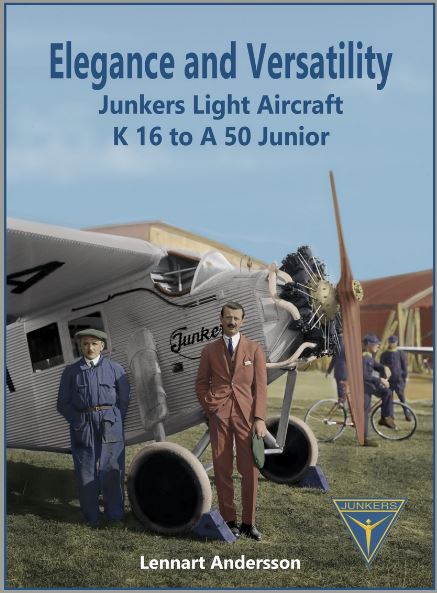
This book is about all the smaller Junkers types that were designed and built during the same period as the more well-known F 13, G 24 and W 33/W 34. The A 20 and A 35/K 53 were produced in great numbers and served in countries all over the world. The majority were of the military version, but the A 20 was also used for pioneering night airmail services.
The two-seat H 21 and the single-seat S 22 fighter were built for the Soviet Union. The K 47 two-seat fighter was sold to China and was used in dive-bombing experiments and the A 50 Junior was intended for the emerging private aircraft owner market. Junkers built substantial numbers of the Junior and they and found buyers in all corners of the world. It became world famous especially for daring long-distance flights made by illustrious aviators, including female pilots.
Contents:
Introduction
For Travellers in Style – The Junkers K 16
Two-Seaters for Private Flying and Training – The Junkers T Series
Civil and Military Use – The Junkers A 20 and Derivatives
Specially Made for the Red Air Fleet – The Junkers J 21 and J 22
Two-seat Fighter and ‘Stuka’ – The Junkers K 47
The Private Aircraft Owners Dream – The Junkers A 50 Junior
Specifications and Performance
Drawings
Sources and Bibliography
Index
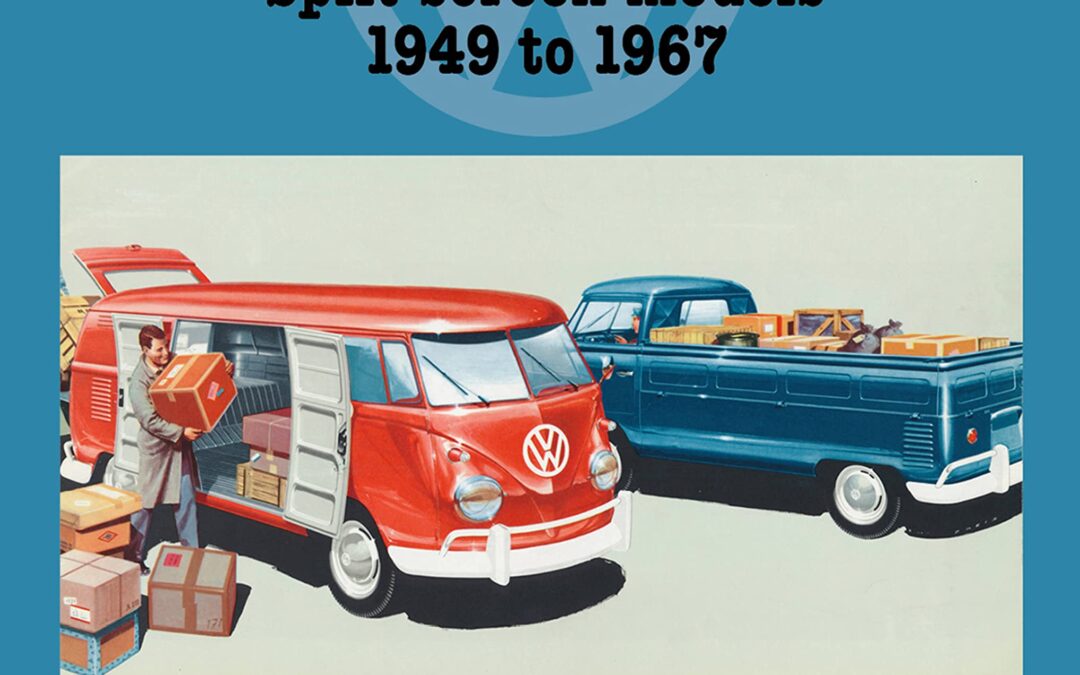
From a simple sketch of a box-shaped delivery vehicle to one of the most recognisable silhouettes in motoring, the first-generation VW Transporter formed the genesis of what was to become the best-selling van in history.
Unveiled in November 1949, the quirky VW Transporter would soon find demand for its services throughout the world, thanks to its cab-forward layout, ingenuity and adaptability. The initial Panel Van gave rise to a flexible Pick-up, revolutionary Kombi, adventurous camper and and an endless catalogue of inspired conversions and variations. There were ambulances, mobile shops, school buses, fire tenders, high-roofed vans, double-cab pick-ups, police vans, mobile milking machines, and so many more.
As Volkswagen survived Second World War turmoil and thrived under the firm focus of director general Heinz Nordhoff, this book charts the progress of the innovative Transporter as its initial weaknesses were improved and eventually perfected to exploit the Beetle-based rear-engined layout.
Much like the Beetle, the Transporter gained a cult following around the globe, with its attributes as a commercial vehicle equalled by its status as a hippie bus and stalwart of the surfing community. There was barely a nation on Earth where the Transporter hadn’t become engrained in its culture or everyday life.
VW replaced the German-built first Transporter with a second-generation machine in 1967, but manufacturing continued in Brazil until 1975 – where the rear-engined platform itself remained in production until 2013.
It’s no wonder, then, that the first-generation Transporter is so well-loved today, and why its incredible story can be told here in such beautifully-presented and expertly-researched detail. From the first drawings and prototypes of the late-1940s to the final split-screen Transporters of 1967 and South American derivatives of the 1970s, Volkswagen author Richard Copping guides us through an unmissable volume where each model, all variants and every option of the first-generation Transporter is lavishly accompanied by sumptuous period photography and stunning brochure illustrations.

Porsche’s fabled 911 represents the ultimate expression of Ferdinand Porsche’s original vision of the perfect sports car. In The Complete Book of Porsche 911, author and photographer Randy Leffingwell provides a year-by-year overview of Stuttgart’s most famous car, from the original 901 prototype to today’s technologically advanced GT2 and GT3 derivatives and the latest 992-generation 911. Along the way, he highlights the racing, prototype, and limited-production cars—offering the most complete reference available to these top-tier sports cars.
In this book, you’ll find the air-cooled cars of 1963 to 1998, then the water-cooled 911s of 1998 to present day. With behind-the-scenes info on the evolution of this iconic sports car, this book offers the detail craved by Porsche enthusiasts. Illustrated throughout with images from Porsche’s own historical archive and complemented by the author’s stunning photos, along with detailed technical specification tables, The Complete Book of Porsche 911 offers a thorough account of one of the most beloved enthusiast cars ever produced.

For anyone interested in the coil-sprung Land Rovers that have served (and still serve) with the British armed forces, Land Rovers in British Military Service – coil sprung models 1970 to 2007 is a must. It covers first-generation Range Rover and Discovery models, as well as the One Ten, Ninety and One Two Seven, their Defender successors and, of course the Wolf XD derivatives. Coverage deliberately ends at 2007 to respect current military sensibilities. This unique and extensively illustrated book describes and illustrates British military use and adaptations of these vehicles, and also contains comprehensive vehicle lists and contract details. The book is a sequel to British Military Land Rovers, the leaf-sprung models, by the same two authors (published by Herridge & Sons in 2015).
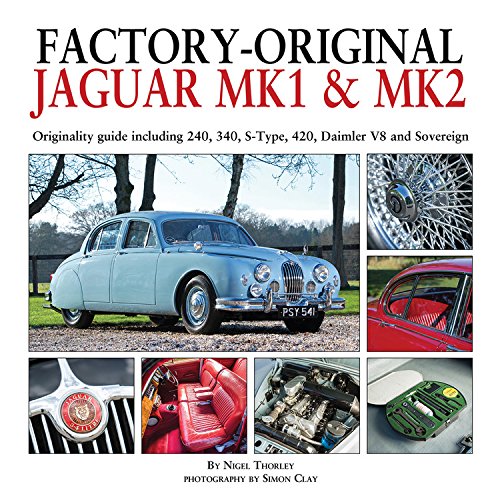
Originality guide including 240, 340, S-Type, 420, Daimler V8 and Sovereign
Jaguar founder Sir William Lyons had a hit on his hands when he launched the “compact” 2.4 liter sports saloon in 1956. A year later those wanting more thrills were offered the 120mph 3.4 Liter. Both were replaced in 1960 by the Mk2 models, which added a 3.8 liter, and from there on, the range was developed and expanded with the long-booted S-type of 1964, the 4.2 liter 420 of 1967, and the final 240/340 models of 1968.
Alongside there were the Daimler V8 and Sovereign models. The Mk1 and Mk2 and their derivatives have been heading the list of desirable classic cars for many years, and more and more worn-out, semi-derelict examples are being dragged out of garages and barns to be restored.
For those seeking originality in a restoration, or considering the purchase of a car, or even noting points of originality or otherwise in a car they already own, Factory-Original Jaguar Mk1 & Mk2 provides the comprehensive guide to factory specifications, equipment and finishes in all departments.
It covers engine and transmission, body panels, interior and exterior trim, electrics, dashboard, instruments, switches and controls, lamps, under the hood components, paint and trim colors – in fact, everything right down to the tool kit, from the beginning of production to the end.
The text is accompanied by some 300 specially commissioned color photographs of outstanding examples of the cars, enabling the reader to view every model and variant in considerable detail.

The editions are numbered — the German version from 1 to 991, the English version from 1 to 1500. The book covers the early 911R of 1967 of which only 20 cars plus 4 prototypes had been manufactured as well as the new 911R from 2016, that had been sold out on the day it was launched on the exhibition in Geneva. The authors Christoph Mäder, Georg Konradsheim and Thomas Gruber spent one and a half years researching, writing and layouting this book. It comprises:
- all races that the Porsche works team attended with the early 911R,
- the story behind the development of both 911Rs,
- the technic of both cars including engines, transmissions, suspension and aerodynamics,
- a list of all chassis numbers.
The book “911 R” lets the reader feel as if he had visited the construction offices in Weissach. Over 15 Porsche engineers have been interviewed for this book.
The 911R is the father of all motorsport derivatives of Porsche’s 911 model. The story of the R is connected to Huschke von Hanstein, Ferdinand Piech as well as Vic Elford. Originally, it hadn’t been planned by Porsche to use the 911 as a flagship model for motorsports. The book is made up of two parts: the 911R with 210 hp of 1967 as well as the model from 2016 with 500 hp.
The development of the 911R during the 1960s, the efforts of the works team with the plastic 911, the engines that were used with the car (including the quad-cam type 916) and the world records that the car had set up in Monza are described. The second half of the book covers the 911R model year 2016 and dives into the story of how it came about, tells the story of how the R was derived from the GT3 and GT3RS and all available options. The technical development was given room with separate chapters for body, drivetrain, suspension and aerodynamics. A special feature is the list of all 991 units built with their respective color, wheels, interior and country specific equipment.
Specal 3D-illustrations were created exclusively for this book. They were printed on acetate foils to grant the reader an x-ray view of the packaging of the modern 911R. The design of the cover pays tribute to the car itself by resembling the interior with the brown/houndstooth combination. The book is protected by a silver slipcase which features the two stripes that are so characteristic for this car. The English version is graced by red stripes, the German version carries green stripes.
Details and features
- English edition: 1500 numbered copies
- 384 pages
- 2 acetate see-through pages with 3D-imagery
- Format 26.0 x 29.9 cm (Slipcase format: 27.0 x 31.0 cm / 10.6″ x 12.2″)
- Silver slipcase with red stripes (glossy)
- 428 photos (color), 125 photos (b/w)
- 49 illustrations
- 135 historical documents
- Published in English language November 2017

BMW, that most performance-oriented of car companies, had no affordable sports roadster in its line-up before 1995. Stung into action by Mazda’s revival of the classic two-seat roadster, the Germany company quickly staked its claim with the Z3, a classic long-nose, short-tail design that used existing BMW mechanical hardware to good effect. This new book tells the story of BMW’s Z3 and Z4 two-seater roadsters and coupés, which since 1995 have been at the forefront of the affordable sports car market. The complete history of the Z3 and both generations of Z4 are covered as well as full specifications of each model and the formidable M Power derivatives.
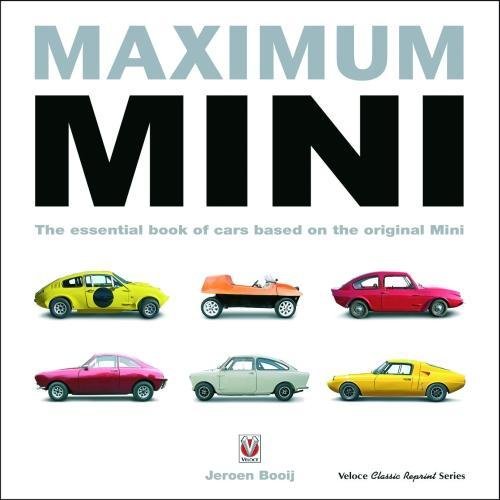
Maximum Mini is the first book to focus solely on the cars derived from the classic Mini. Small GTs, sports cars, roadsters, and Fun Cars: Mini-derivatives made the specialist motoring market roar in the 1960s.
In the decades since the ‘60s, we saw new variants on the car that simply wouldn’t die; some genius, some crazy, but always colorful and out of the ordinary. Maximum Mini takes a deep dive into almost 60 different Minis. You’ll get specs, facts, tons of high-quality photographs, and more on vehicles like Mini Marcos and Unipower GT, the very obscure, and very exciting, Coldwell GT and Sarcon Scarab, and loads more.
Maximum Mini goes directly to the source with its information; much of it coming directly from interviews with original designers and build teams. Some cars that were thought to be long gone were even found during the researching of this book!
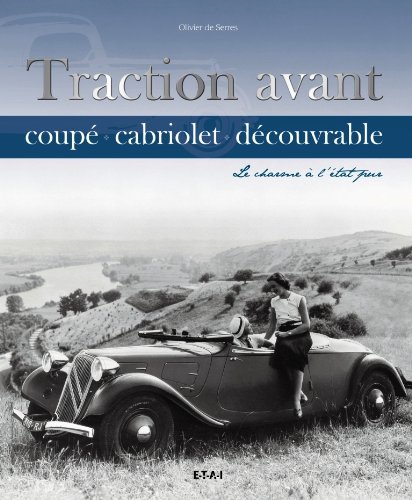
Traction Avant coupé, cabriolet, découvrable : Le charme à l’état pur
Among the biggest myths of the automobile, the Citroën Traction Avant with two doors, cabriolets and coupes (roadsters and faux-cabriolets according to the period names) occupy a place of choice. Indeed, endowed with a capital of seduction intense and enigmatic, but especially absolutely intact, this car with indisputable charm struts proudly alongside machines much more luxurious or more powerful. Even at a time when a 11 HP Traction was trading for a handful of cherries, the roadster inevitably earned respect. Its image and its harmonious forms remain associated with the countless black-and-white smiles displayed on the French or European coasts, the elegance contests or the carefree escapades of the late 1930s. This book deals with the phenomenon by a chronological approach to through four key periods of its history: the time of production, the time of forgetting, then the rebirth and finally the dedication that enthusiastic collectors give it today. Reference tool, this book provides unpublished production figures and precise elements of restoration by scratching the universe of replicas in passing. It goes through all the variants of versions 7 and 11, not to mention the 15 or the mysterious cabriolet 22. The models produced or sold abroad are also highlighted. A full chapter is devoted to derivatives and special bodies. Olivier de Serres knows his subject at his fingertips and can rely on knowledge acquired over the years in both design office and workshop. The reader thus has the assurance of reliable information where the feeling is authentic.
French text
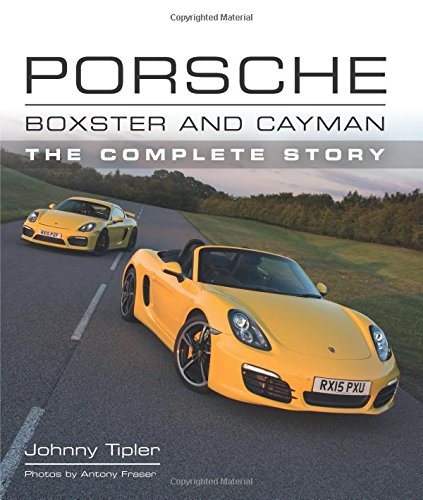
Porsche Boxster and Cayman follows the design and development of this mid-engined sports car and coupe family, from their origins in the company’s concerted racing activities in the 1950s and 1960s, to the drawing board, launch and systematic evolution through successive model ranges from 1996 to 2016. There are detailed profiles and evaluation of all Boxster and Cayman derivatives, including 986, 987, 981 and 718. Specifications of the various models are given including entry-level, S, GTS and GT-4. The special Limited Editions, such as the 550 Spyder 40th Anniversary models are also included. The book covers some of the author’s international driving experiences at the wheel of Boxster and Cayman including the Bilster Berg race circuit and Tour Auto. There is also an intriguing interview with successful racer Rebecca Jackson, who describes the techniques of Boxster racing and demonstrates the versatility of this best-handling of all Porsche sports cars.

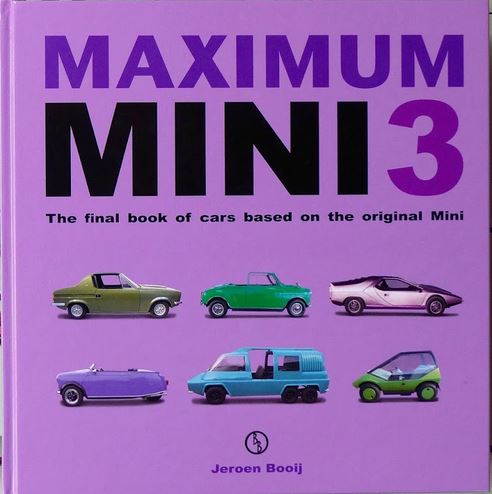
The final book in the Maximum Mini series, already now referred to as the Mini’s ‘Trilogy of Terrors’…
So, what to expect?
Another 128 pages full of Mini based cars, in a hardback similar in size and lay-out as the first two volumes. Yes. But that’s where the similarities end. This one is quite different from what you have seen before.
Where all of the known and slightly lesser known cars were covered in detail over a two-page spread each in the first two books, this one features a lot more of them. 397 More Mini derivatives to be precise. Yes. 397. It has become a bit of an encyclopedia of obscurities and you’ll be surprised to find out what else the Mini’s multipurpose mechanicals brought forth. Trikes, twinis, racers, coachbuilt specials, beach cars, buggies, jeeps and a dragster, oh yes. But there are also also Mini powered fire engines, crop sprayers, ice cream vans, camper vans, motorkhana specials, miniature buses and wacky marketing mobiles. There is a Wood & Pickett trimmed four-door Mini which did the grueling 16,000-mile World Cup Rally in 1970 and a three-wheeler that was designed and built by the chief stylist of Rolls-Royce and Bentley in his spare time. There are Mini Moke based movie vehicles from Moonraker and UFO, The Persuaders and The Prisoner.
Apart from the UK the vehicles featured in this book originate from Ireland, the US, Canada, Australia, New Zealand, Scotland, Germany, Malta, Japan, Italy, France, Greece, Portugal, South-Africa, Belgium, The Netherlands, Spain, Barbados, Denmark, Uruguay, Chile and Switzerland.
limited edition of 600 numbered pieces

Volvo Amazon – The Complete Story includes the history of Volvo before and after the Amazon; development and production of all Amazon derivatives from 1956-1970, including the 121, 122S, 122S, 123GT and all of the estate editions. Biographies of key Volvo personnel, including the company’s first designer, Jan Wilsgaard are featured. Full buying guide along with tips on tuning and modifying, including rally preparation. Finally, the book gives an insight into what the press thought of each Amazon derivative, with pages also devoted to how the car was marketed in period.

A quarter of a century ago, the Land Rover Discovery defined at a stroke how traditional 4 x 4 all-terrain ability could co-exist with family-estate practicality at an affordable price. Since 1989, the Discovery has gone through several iterations, but its essential qualities have remained unchanged. Practical, capable, and above all completely distinctive – the stepped roof seemed odd at first but now defines the Discovery shape – the Discovery has gone on to become one of Land Rover’s best-loved products. Land Rover Discovery – 25 Years of the Family 4 x 4 looks in detail at the four generations of Discovery, including full specification details and production histories. Topics covered include:Design and development of the original Discovery in the late 1980s, and the move into North America.The new 300Tdi engine and R380 gearbox of 1994, and the BMW takeover.Series II models of 1998-2004, and Land Rover’s move from BMW to Ford.Discovery 3/’LR3′ – 2004-2009, and the new TDV6 engine, developed by Jaguar.Discovery 4/’LR4′ – the all-purpose family luxury car.Special editions and derivatives of all four generations of Discovery, including Discoverys for the emergency services and the Camel Trophy and G4 Challenge competition vehicles.The twenty-fifth year of production and the 2014 models.
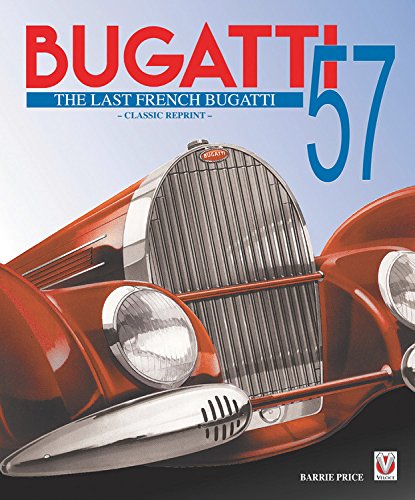
If I was asked to give my opinion as to the best all-round super-sports car … I should, without hesitation whatever, say it was the 3.3 [T57] Bugatti.” – Sir Malcolm Campbell, The Field, September 4th, 1937.
The magnificent Type 57 was the final flowering of the genius of Ettore Bugatti and Jean Bugatti, and was the last truly new model from the Bugatti factory in Molsheim, France.
Conceived as a fast, luxurious and exclusive touring car, the T57 was in production from 1934 to 1939, and was so successful that the model accounts for around 10 per cent of all Bugattis built at Molsheim.
Not only a sales success, the T57 formed the basis of a Grand Prix model, a twice Le Mans-winning sports racing car and, in road-going form, wore some of the most beautiful bodies ever created by the great coachbuilders of the vintage period. See the work of: Letourneur & Marchand, Graber, Gangloff, James Young, Corsica, Van Vooren & Saoutchik, Vanden Plas, Figoni & Falaschi, Sodomka, Henri Labourdette, Fernandel & Darren, Franay, Guillore, Malyby, Tuschner, Worblaufen and Rice & Harper. Also the standard bodies: Atalante, Galibier, Stelvio, Ventoux, Atlantic and Aravis.
Barrie Prices work is a concise history of the T57 and its derivatives the T59, T64 and T101, an engineering analysis, and the most thorough survey yet of the many coachbuilt bodies fitted to this famous chassis. The reader will also find appendices crammed with detailed and valuable information ranging from chassis numbers and original owners to sales and service statistics.

The first deployment of the V-1 was in June 1944 when, following two years of tests, Hitler gave the order to attack England. Known to the Allies as the “Buzz Bomb” or “Doodlebug”, the V-1 was the world’s first cruise missile. This book explores the V-1 in detail, from its initial concept, first use in 1944, the various Allied counter-measures, and the later use of the V-1 during the Battle of the Bulge. The major foreign derivatives, including the US copy “JB-2 Loon” and numerous post-war Soviet variants, are also covered.
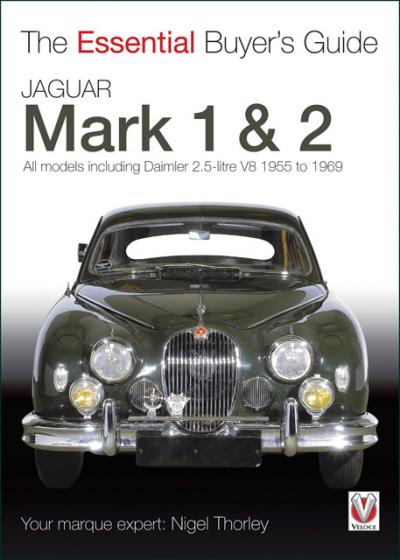
For anyone with an interest in, or who is thinking of buying, one of the classic Jaguar compact saloons from the 1950s and 1960s, this Essential Buyer’s Guide is a vital requirement. All the models are covered, from the early 2.4- and 3.4-litre saloons from the late 1950s, through to the very last 240 models, AND, just as importantly, the Daimler derivatives with the V8 engines.
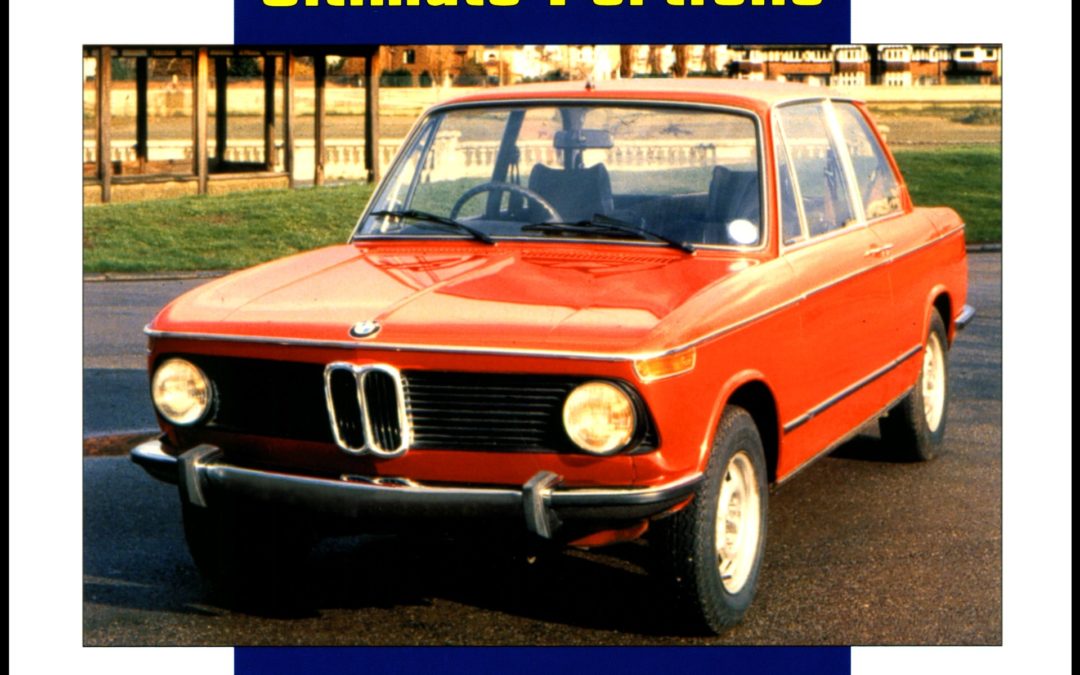
The 2002 began as the brainchild of Max Hoffmann, BMW’s US importer, who wanted a car to follow up the 1600-2. Hoffman suggested using the 2-liter engine from its larger saloons, which would give excellent performance even in emissions-controlled form. The BMW engineers did as Hoffmann suggested and the result took the motoring world by storm on its announcement in 1968. So popular did the 2002 become that it went on to sell more than 300,000 examples over the seven years of its production. The original 2002 was complemented by a whole range of derivatives – convertible, hatchback touring models and finally, the legendary 2002 Turbo. The 2002 models are widely and rightly recognized as classics of their period and enjoy a large and committed following. This book forms an invaluable reference work and will be welcomed by enthusiasts everywhere.
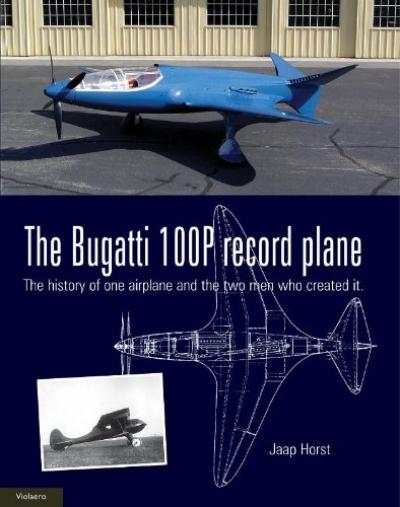
“The development of this extremely advanced airplane with many novel features was started in 1937, for which Ettore Bugatti had hired the Belgian Louis de Monge as chief engineer. The first version of the airplane was planned as a speed-record airplane, a military version was to follow later. Tragically the Bugatti 100P airplane never flew, the Germans invaded Paris where it was being built before it was 100% ready. The airplane surprisingly survived the war, and still exists in the EAA museum in Oshkosh, USA. Both engines exist, and were built into Bugatti race-cars. Currently a flying replica is being constructed in the USA, built in such a way, that it will be aerodynamically the same as the original.
This book for the first time describes the complete history of this wonderfully beautiful streamlined airplane, as well as all of its novel systems. Also, the histories of both the plane’s creators are followed, from the early years of aviation.
Ettore Bugatti is of course well-known through his race- and sportscars from the years in between both worldwars, but he was also interested in many other technical devices. During the first world war airplane-engines were designed and built, the book describes these engines and derivatives in detail, showing also all the airplanes which used these engines, including the world’s first fully functional “modern” helicopter.
Louis de Monge built his first airplanes before WWI, during WWI he designed and produced modern propellers, sold under the name Lumière. After WWI many, often technically advanced, designs were made. The complete history of his many interesting inventions and lack of commercial success is published here for the first time.
“






















